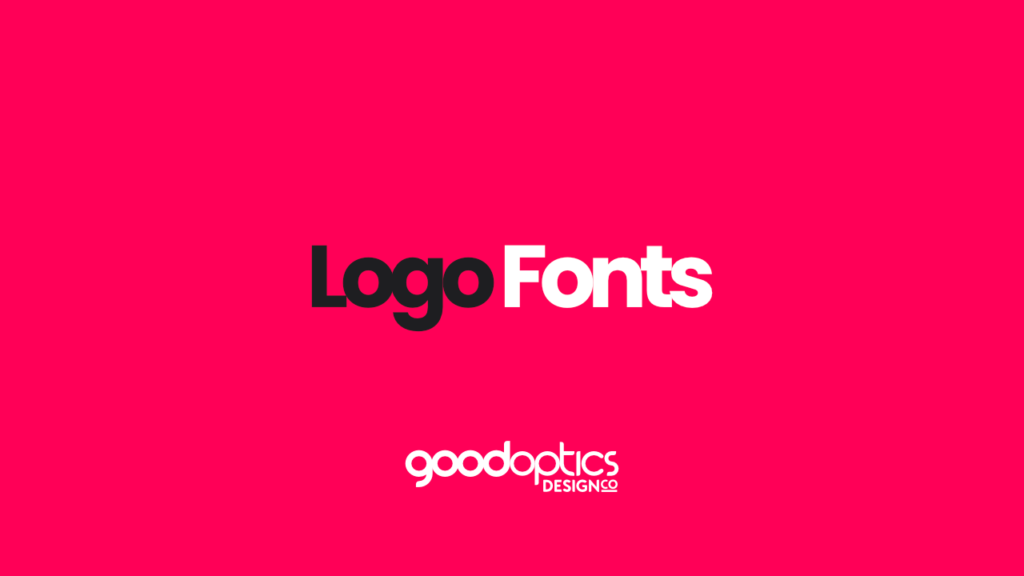
Font Usage Guidelines When Designing Logos
Font Usage Guidelines When Designing Logos https://goodoptics.design/wp-content/uploads/2025/01/logo-fonts-1024x576.png 1024 576 Good Optics Logo & Branding Design Good Optics Logo & Branding Design https://goodoptics.design/wp-content/uploads/2025/01/logo-fonts-1024x576.pngWhen creating a logo, one of the first steps is choosing the right font. Fonts have the power to convey personality, professionalism, and creativity, but did you know that using fonts in logo designs comes with legal considerations?
Many people overlook the legalities of logo font usage, but they’re important to understand if you want to avoid potential copyright issues. Let’s dive into the rules and best practices for using fonts in logo designs.
Differences Between Free Fonts & Premium Fonts
Fonts generally fall into two categories: free and premium. Free fonts are exactly what they sound like—fonts you can download without paying a cent. Premium fonts, on the other hand, require you to purchase a license to use them.
While free fonts are great for budget-friendly projects, they often come with limitations, especially when it comes to commercial use. Premium fonts, though they cost money, offer advantages like higher quality and more reliable licensing terms. Understanding the differences between these two types of fonts is crucial when designing a logo.
Free Fonts
Free fonts are widely available online, with sites like Dafont and Google Fonts offering thousands of options. However, just because a font is free to download doesn’t mean it’s free to use in any way you want. Most free fonts are only free for personal use, meaning you can use them for hobbies or school projects but not for commercial purposes like logo design.
When designing a logo, commercial use is a given. If you use a free font without checking its licensing terms, you could face legal consequences later. This is a common mistake many people make, especially when they’re unaware of the restrictions attached to free fonts.
Free For Commercial Use
If you’re set on using a free font, make sure it’s labeled as “free for commercial use.” Fonts like these can be found on websites such as Font Squirrel or even Dafont, where you can use a filter to display only fonts that meet this criterion. These fonts come with licenses that explicitly allow you to use them in projects meant for business purposes, including logos.
Using fonts that are free for commercial use is a smart way to avoid legal troubles while still keeping costs low. Just double-check the licensing terms before you commit to a font.
Premium Fonts
Premium fonts are fonts you pay for, and they often come with significant advantages.
First, they’re typically higher in quality. Premium fonts are meticulously designed, making them more legible and visually appealing. They’re also easier to work with when trying to find the perfect match for your design.
Another benefit is that premium fonts usually come with clear licensing agreements, which reduces confusion about how they can be used. While purchasing a premium font may seem like an added expense, it’s often worth it for the professional polish it can bring to your branding.
Do I Have To Purchase A License If My Designer Uses A Premium Font For My Logo?
If you hire a designer to create your logo and they use a premium font, you might wonder if you’re required to purchase a license for the font as well. The good news is, you don’t have to.
Here’s why: when a designer creates your logo, they’re delivering a vector design file, not the font file itself. Copyright law protects the font software—the file that you would install on your computer—but not the appearance of the letters in the design.
Essentially, the designer is using the font as a tool to create something new, and you’re purchasing the final product, not the tool.
What If I Want To Use The Premium Font Elsewhere?
Let’s say you love the font your designer used for your logo and want to incorporate it into other branding materials, such as your website or business cards. In this case, you’ll need to purchase a license for the font yourself.
It’s important to know that there are two main types of font licenses: desktop and web.
A desktop license allows you to use the font in design software like Adobe Illustrator to create printed or digital materials. A web license, on the other hand, allows you to embed the font on your website.
Be sure to choose the correct type of license based on how you plan to use the font. If you’re unsure, consult with your designer or read the font’s licensing terms carefully.
Conclusion
Understanding the legalities of font usage in logo design may seem complicated at first, but it’s essential to protect yourself and your business. Whether you’re using free fonts, free-for-commercial-use fonts, or premium fonts, knowing the rules will save you from potential headaches down the line.
If you’re looking for a professional logo that takes all these considerations into account, Good Optics Design Co is here to help. We’ll handle the design and licensing details so you can focus on building your brand. Contact us today to get started on your logo design journey!


